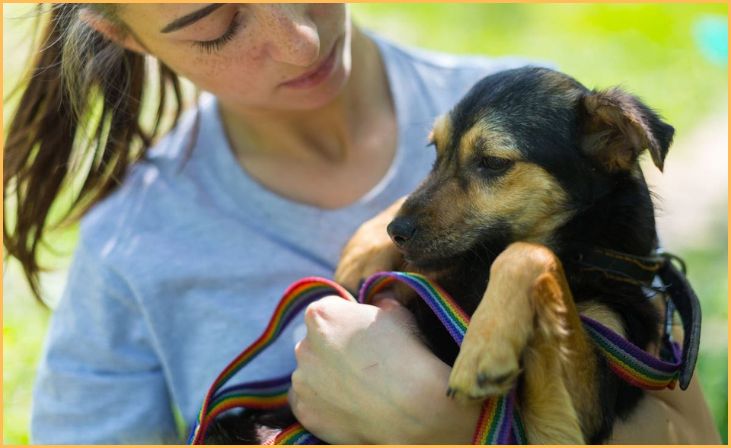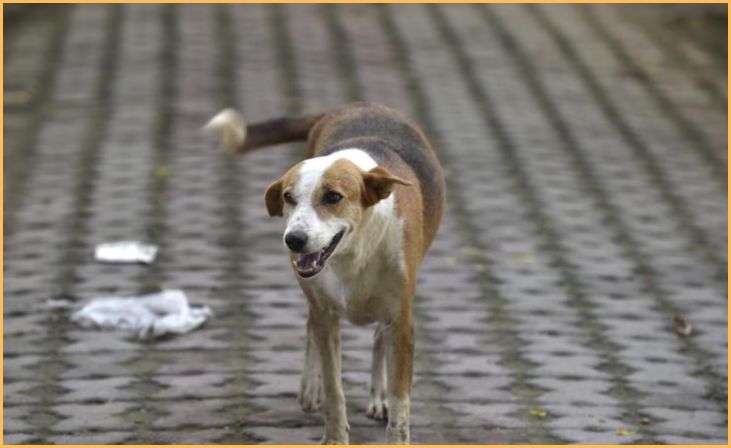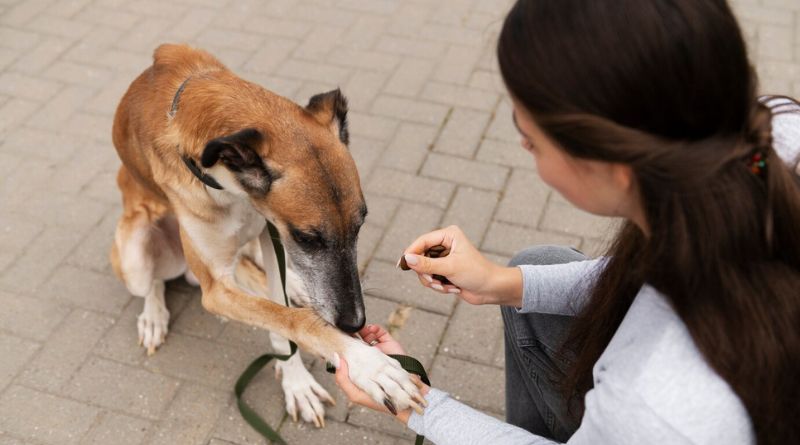Welcome to our blog, where we embark on a compassionate journey to guide you through “8 Essential Steps to Successfully Save a Stranded Dog.” Finding a stranded dog can be a heart-wrenching experience, but with the right knowledge and swift action, you can make a significant difference in their lives. In this comprehensive guide, we delve into the critical steps that can lead to a successful rescue mission, covering everything from initial assessment to securing the dog’s safety and well-being.
Our aim is to empower you with practical tips, insights, and expert advice to ensure you approach the situation with confidence and competence. From understanding the dog’s body language to establishing a connection and coordinating with local authorities, each step is carefully outlined to maximize the chances of a successful rescue. Join us on this noble quest to be a hero for our four-legged friends and make a lasting impact on their lives.
Steps to Successfully Save a Stranded Dog
1. Evaluate the Situation

The first crucial step in successfully saving a stranded dog is to thoroughly evaluate the situation. Upon encountering a distressed or stranded canine, it’s imperative to remain calm and observe the surroundings. Assess the dog’s physical condition, demeanor, and any visible signs of injury or distress. Take note of the environment – is it safe or potentially hazardous? Approach slowly and avoid sudden movements to prevent startling the dog further. Pay close attention to the dog’s body language, as it can provide valuable insights into its emotional state.
A wagging tail may signify friendliness, while growling or cowering could indicate fear or aggression. Additionally, check for any identification tags or collars that might provide information about the dog’s owner. This initial assessment lays the foundation for informed decision-making, guiding the subsequent steps in the rescue process. Remember, a calm and methodical evaluation increases the likelihood of a successful rescue and ensures the safety of both the rescuer and the stranded dog.
For More- The Top10 Cutest Mixed Dog Breeds of 2023
2. Approach Calmly
After a thorough evaluation of the situation, the next pivotal step in successfully saving a stranded dog is to approach calmly. Once you’ve assessed the dog’s condition and established a basic understanding of its behavior, it’s essential to approach with care and gentleness. Avoid sudden movements or loud noises that may startle or agitate the dog further. Speak in a soft, reassuring tone to convey a sense of safety and trust. Maintain a relaxed posture and avoid direct eye contact, as some dogs may interpret it as a threat.
Slowly extend a hand, allowing the dog to sniff and become familiar with your scent before attempting physical contact. Patience is key during this phase, as building a connection based on trust is crucial for a successful rescue. By approaching calmly, you create a positive environment that increases the likelihood of the dog responding positively and allows for a smoother transition into the subsequent steps of the rescue process.
3. Offer Food
Once you have approached the stranded dog calmly and established a degree of trust, the next important step is to offer food. Providing nourishment not only addresses the immediate needs of the dog but also serves as a powerful tool to further build trust. Choose something enticing and palatable, such as dog treats or easily digestible food. Extend your hand with the food, allowing the dog to approach and take it at its own pace.
This gesture not only helps address potential hunger but also establishes a positive association with your presence. Be patient, allowing the dog to become comfortable with your offering before attempting any further actions. In some cases, a hungry or scared dog may be more willing to cooperate if they associate you with a source of comfort and sustenance. Offering food is a compassionate approach that fosters a positive connection, setting the stage for a smoother and more successful rescue.
4. Use a Leash or Carrier

Once you have gained the trust of the stranded dog through a calm approach and offering of food, the next step in a successful rescue is to use a leash or carrier. These tools are crucial for safely securing the dog and preventing any potential escape or injury. If the dog seems comfortable with your presence and is willing to approach, gently introduce the leash. Choose a leash that is appropriate for the dog’s size and strength, ensuring a secure fit without causing discomfort. If you have a carrier available, especially for smaller dogs, use it as an alternative method of containment.
Slowly and carefully secure the leash to the dog’s collar or guide the dog into the carrier, all while maintaining a calm and reassuring demeanor. This step ensures not only the safety of the dog during transport but also provides a controlled environment for further assessment or potential medical attention. Using a leash or carrier is a practical and humane means to facilitate a smooth transition from the rescue site to a place of safety.
5. Call Animal Control
After securing the stranded dog with a leash or carrier, the next crucial step in the rescue process is to promptly call Animal Control. Reporting the found dog to local authorities ensures a coordinated effort to locate its owner and provides a safe and regulated environment for the dog’s well-being. Contact your local Animal Control or relevant animal welfare organizations to provide them with detailed information about the found dog, including its physical description, location, and any identifiable features.
Share your contact information in case the owner reaches out, and inquire about the procedures for transferring the dog to their care. Animal Control professionals are trained to handle lost or stray animals, possess the resources to scan for microchips, and can initiate efforts to reunite the dog with its owner. This collaborative approach not only adheres to legal requirements but also maximizes the chances of a successful reunion, ensuring the best outcome for the stranded dog.
6. Provide Basic Care
Once you’ve secured the stranded dog and alerted Animal Control, the next vital step is to provide basic care. Attend to the immediate needs of the dog, addressing factors like hunger, thirst, and potential injuries. Offer clean water and a small amount of dog-friendly food to help nourish and hydrate the animal. If the dog appears injured or unwell, handle it with gentle care, avoiding unnecessary stress.
Keep the dog in a safe and comfortable environment, shielding it from extreme weather conditions. If possible, provide a blanket or towel for warmth. While awaiting the arrival of Animal Control or other relevant authorities, refrain from making sudden movements or loud noises to maintain a calm atmosphere. Your thoughtful and compassionate care during this interim period contributes significantly to the well-being of the stranded dog and ensures it remains as stress-free as possible until it can be properly assessed and reunited with its owner.
7. Check for Identification
As part of the comprehensive steps to assist a stranded dog, it is crucial to check for identification. While awaiting the arrival of Animal Control or other relevant authorities, carefully examine the dog for any form of identification, such as tags on its collar. Identification tags often contain vital information, including the owner’s contact details or a microchip code. If the dog has a collar but no tags, consider taking it to a nearby veterinary clinic or animal shelter equipped with microchip scanners.
Many pets have microchips embedded under their skin, providing a unique identification number that can be linked to the owner’s contact information. Checking for identification is a proactive step toward reuniting the dog with its owner swiftly. It also ensures that all possible avenues are explored to establish the dog’s background and facilitate a seamless reunion process.
8. Consider Adoption

In certain instances where the stranded dog’s owner cannot be identified or located, it becomes essential to consider adoption. This step involves assessing the feasibility of providing a permanent home for the dog, either personally or through collaboration with local animal shelters or rescue organizations. Before deciding on adoption, it’s crucial to consult with local authorities, such as Animal Control, to ensure compliance with legal procedures.
Additionally, evaluate your own ability to meet the long-term needs of the dog, considering factors like space, time, and financial resources. If adoption is not personally viable, reaching out to reputable animal welfare organizations can increase the chances of finding a suitable and loving forever home for the dog. This step represents a commitment to the well-being of the stranded dog, offering it a chance for a new and fulfilling life when reuniting with its original owner is not possible.
Also Read- The Top 9 Independent Dog Breeds: Celebrating Canine Individuality
Conclusion
Embarking on the journey to save a stranded dog involves a sequence of essential steps that blend compassion with practicality. From the initial evaluation of the situation to the thoughtful consideration of adoption when needed, each step contributes to the overall success of the rescue mission. Remember, your actions can make a profound difference in the life of a stranded dog, offering comfort, care, and the possibility of reuniting with its owner. By following these eight crucial steps, you become a beacon of hope for our four-legged friends, exemplifying the power of empathy and responsible pet ownership.
FAQs
If the dog displays signs of aggression or fear, maintain a safe distance and avoid making direct eye contact. Speak in a calm and soothing tone, and consider seeking professional help from Animal Control or local authorities.
While it depends on the specific circumstances, it’s generally advisable to wait for Animal Control to arrive, as they have the expertise and resources to handle lost or stray animals. If the situation is urgent or the dog requires immediate medical attention, contact local authorities promptly.
Adopting a stranded dog on your own is possible, but it’s crucial to follow legal procedures and ensure the well-being of the animal. Consult with Animal Control or local shelters for guidance, as they can provide valuable information on the dog’s background and assist in the adoption process.







